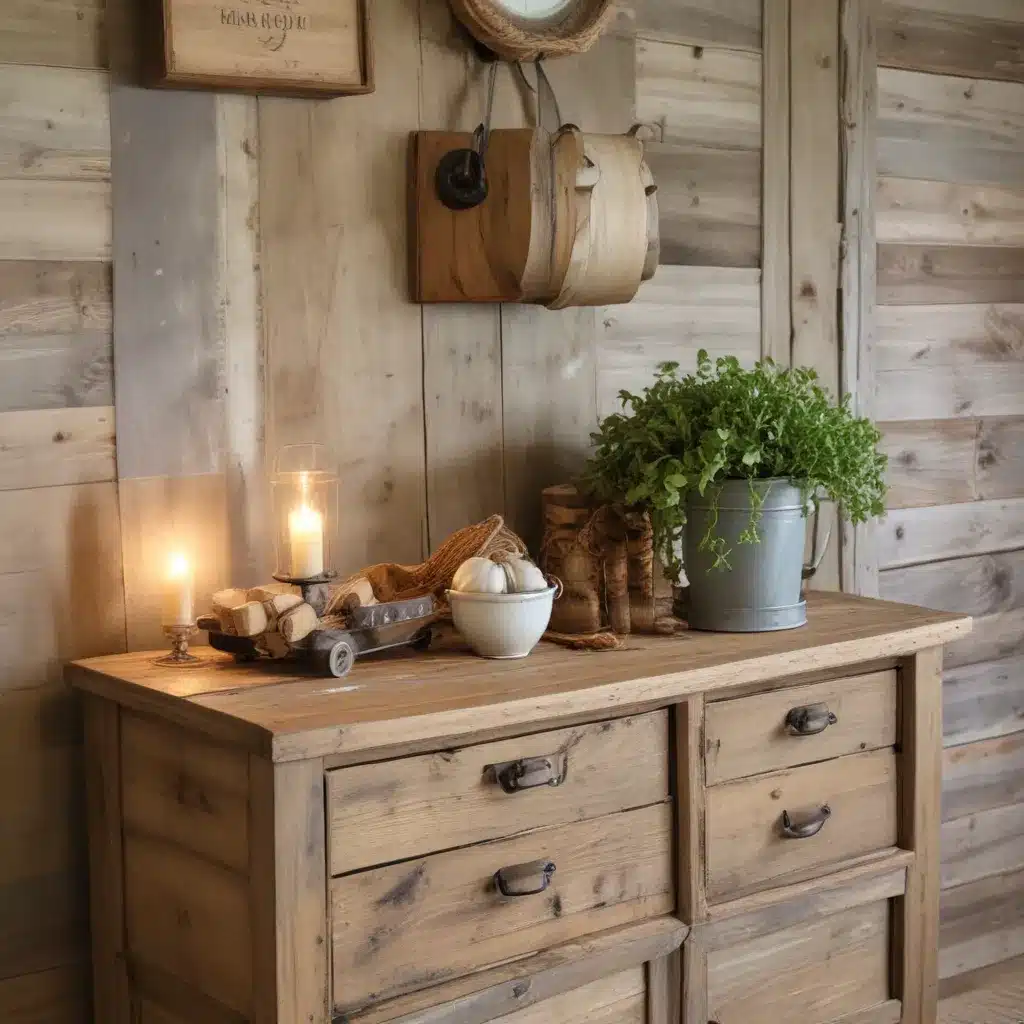
The allure of farmhouse style lies in its ability to transform the objects of everyday life into cherished décor. By repurposing vintage farm materials, you can infuse your home with a sense of rustic charm and historical character. Whether it’s an old dairy churn, a weathered barn door, or a tarnished milk can, these once-utilitarian items can be given new life as functional, eye-catching pieces that elevate your living spaces.
Vintage Farm Materials
Characteristics of Vintage Farm Materials
The beauty of vintage farm materials lies in their imperfections and the stories they hold. These objects often bear the marks of hard work and the passage of time – chipped paint, weathered wood, and tarnished metal. This patina of age is what makes them so appealing, evoking a sense of nostalgia and timelessness.
Sourcing Vintage Farm Materials
Finding the right vintage farm materials for your décor can be an adventure in itself. Scour local antique shops, flea markets, and farm auctions for unique pieces. Keep an eye out for items like old ladders, galvanized buckets, rusty farm tools, and weathered wooden crates. You can also check with local farmers or family members who may have old equipment or materials they’re willing to part with.
Repurposing Vintage Farm Materials
The true magic happens when you breathe new life into these vintage finds. By repurposing them, you can create functional and visually stunning pieces that seamlessly blend the old and the new. Think outside the box – a worn barn door can become a stunning headboard, while a vintage metal milk can can be transformed into a charming side table or a whimsical planter.
Functional Decor Design
Identifying Functional Needs
Before you start your upcycling projects, take a moment to consider the specific functional needs in your home. Are you looking to add extra storage, display space, or a focal point in a room? Identifying these needs will help you select the right vintage materials to work with and ensure your final pieces are both beautiful and practical.
Integrating Vintage Elements
The key to creating a cohesive, rustic refined look is to seamlessly integrate your vintage farm materials into your overall décor. Mix and match different textures, finishes, and styles to achieve a collected, layered aesthetic. For example, you might pair a distressed wooden table with sleek metal chairs and a vintage chandelier for a dynamic and visually interesting space.
Achieving Rustic Refinement
The balance between rustic and refined is essential in creating a farmhouse-inspired space. Avoid going too far in either direction, as an overly rustic look can feel cluttered and outdated, while an overly refined approach can lose the charm of the vintage materials. Aim for a harmonious blend of old and new, where the vintage elements complement and enhance the modern aspects of your décor.
Upcycling Techniques
Cleaning and Restoring
Before transforming your vintage finds, it’s important to properly clean and restore them. Gently remove any dirt, debris, or surface rust using gentle cleaners and soft cloths. Be mindful not to strip away too much of the natural patina, as this is a big part of the appeal. For heavily damaged items, you may need to use more intensive restoration techniques, such as sanding or refinishing.
Structural Modifications
Depending on your project, you may need to make structural modifications to your vintage materials. This could involve cutting, drilling, or even building new frames or supports. Approach these tasks with care and patience, utilizing the appropriate power tools and safety equipment. The key is to maintain the integrity and character of the original piece while adapting it to meet your functional needs.
Decorative Embellishments
Once the structural work is complete, you can add decorative touches to personalize your upcycled pieces. This could include painting, stenciling, or adding hardware like hooks, knobs, or handles. You can also incorporate natural elements, such as greenery or dried flowers, to enhance the rustic aesthetic.
Sustainability in Home Decor
Environmental Impact of Upcycling
Upcycling vintage farm materials not only adds charm to your home but also has a positive impact on the environment. By repurposing these materials rather than discarding them, you’re reducing waste and diverting items from landfills. This aligns with the principles of the circular economy, where the goal is to keep resources in use for as long as possible.
Reducing Waste through Repurposing
When you upcycle vintage farm materials, you’re not just creating beautiful décor – you’re also making a conscious choice to reduce waste and extend the lifespan of these objects. This mindset of repurposing and reusing can have a ripple effect, inspiring others to explore the potential of their own unwanted items.
Embracing the Patina of Age
The patina and imperfections of vintage farm materials are what make them so captivating. Rather than trying to eliminate these signs of age, embrace them as part of the charm and character of your upcycled pieces. This not only adds to the overall rustic refinement of your décor but also honors the history and stories behind these once-functional objects.
By incorporating vintage farm materials into your home décor, you can create a space that is both beautiful and meaningful. Whether you’re upcycling an old milk can or repurposing a weathered barn door, the process of transforming these pieces allows you to infuse your living spaces with a sense of history, character, and sustainability. So, let your imagination run wild and start exploring the endless possibilities of rustic refinement.


